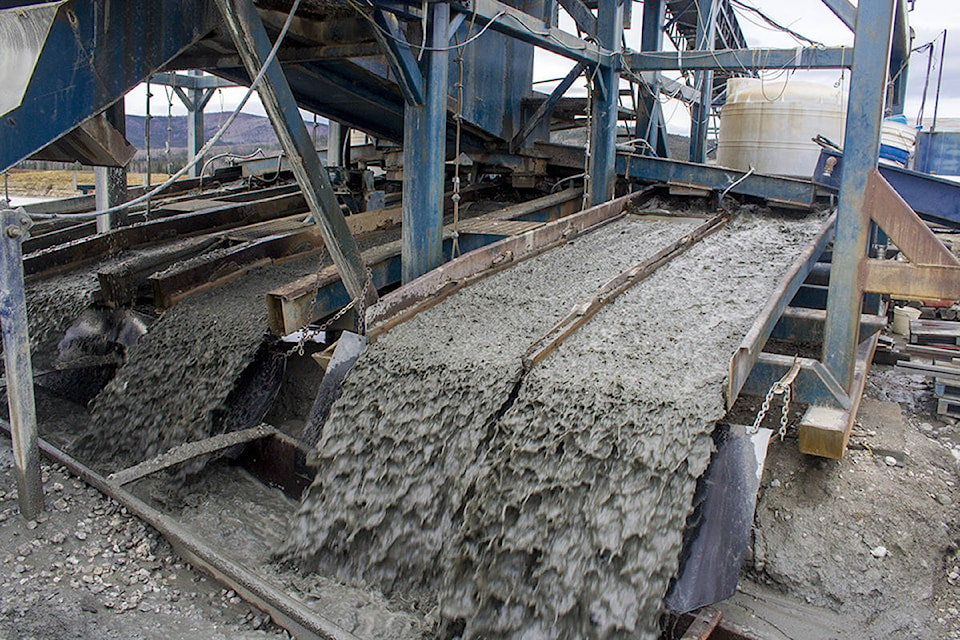By Dean Russell
In view of the fact that an image of our sluice plant was used in your recent article (“Company proposes new method for mining at Yukon’s Burwash Creek,” Aug. 25), I feel compelled to respond in an effort to correct some gross errors.
I do not know Allan Falle, or his training or past accomplishments, however I am familiar with his concept.
I do know Randy Clarkson who is the acknowledged expert in the field of gold recovery via water and gravity along with other advanced engineering methods. I would be comfortable comparing his knowledge, studies and methods to any others in this field anywhere in the world. He truly is an expert that Yukon miners have relied on for decades.
There are a number of issues that do not appear to be factual in your article that are attributed to Falle.
He states that “Traditional placer mining methods, which involve sluicing, use between 3,800 and 57,000 litres of water per minute.” We have one of the largest sluice plants in the Yukon and we pump 24,000 liters per minute to our plant. To say we “use” the water insinuates it is used and gone. That is not true. Our system recycles 100 per cent of the water we use. We use that same water all season. Our system is government inspected, usually twice a year. There is a lot of natural life in our recalculating ponds. Currently they are home to a big family of beaver, ducks, fish and a pair of snow geese.
Additionally, your article reads “Falle claimed the process will make remediation easier, because instead of putting the silt back and then placing the rock on top of it, the process allows the rocks to be put back first and then the silt placed on top of that.” This has been standard practice for decades. No one sluices dirt, there is no gold in it, the gold is in the gravel. Placer miners scrape off the dirt, sluice the gravel, then put the dirt back over the gravel. It is called reclamation and it has been not only standard practice but the law for decades as well.
Furthermore, your article goes on to quote Falle: “The reclamation is so much easier,” he said. “You end up with a couple feet of good, rich topsoil and you have excellent regrowth.” This as well has been standard practice for years so I fail to see the distinction, as we are both putting back exactly what was there before we both started. I will agree that the process of removing soil from the area you mine and putting it back in the proper manner causes the soil to be aerated and the whole soil layer to thaw. This does allow for excellent regrowth of naturally occurring plants as well as previously frozen seeds to flourish. Reclaimed land from reclamation is an excellent host for new growth, especially willows. Rabbits eat them, moose eat them, beavers eat them and make homes and dams from them, grouse live in them. And what does not eat them, eats the animals that do. It is a big part of the circle of life in the Yukon.
In another article Falle is quoted saying “traditional placer methods lose up to 85 per cent of the potential gold in the water, because it is so light and fine.” This is probably the biggest piece of misinformation.
Panning your tailings is a standard practice. Most mines carefully monitor their tailings. There is a small percentage of gold that gets past the common methods but it is in the range of five to 10 per cent.
Perhaps Clarkson was too modest to explain that he is a pioneer in placing small (human safe) radioactive isotopes amongst a pre-sluiced ore pile and then finding them again in the sluice box. That method allows for determining your recovery rate. His in-depth and published study found that most sluice plants recover about 95 per cent of the gold. Ours was tested and was slightly better than average and is 25 years old.
In the same article Falle goes on to say “traditional placer mining is throwing 80 to 85 per cent of the gold away — I choose not to,” as well as “Seventy to 85 per cent of the gold (in the water) is too light to be caught in a traditional sluice box. It’s just too light, it’s gone.” And continues “The fact is that gold smaller than (125 microns) you can’t recover (with a sluice box) … it simply won’t touch the bottom of the box”
That is simply false. We do — and so do most miners — routinely recover fine gold. Not only does a large plant capture it, but our secondary processes gather it for sale.
The fact is it is caught and that steady stream of gold is collected and used to pay our bills, pay our staff, buy parts and contribute to the general economy.
I understand Falle is trying to wind his way through the complex, expensive and thorough processes of the Yukon Environmental and Socio-economic Assessment Board and the Yukon Water Board. They have some very smart people there that can evaluate his project on its own merits. He does not have to put out false statements and try to throw the rest of the placer industry under the bus to make his point.
We have been doing this successfully for years, we do not throw away 85 per cent of what we work so hard to get, and with the support of our community which we contribute so much to, we will continue to do so for many years to come.
Dean Russell is the president of Dominion Gold Resources, one of the largest placer mines in the Yukon.
